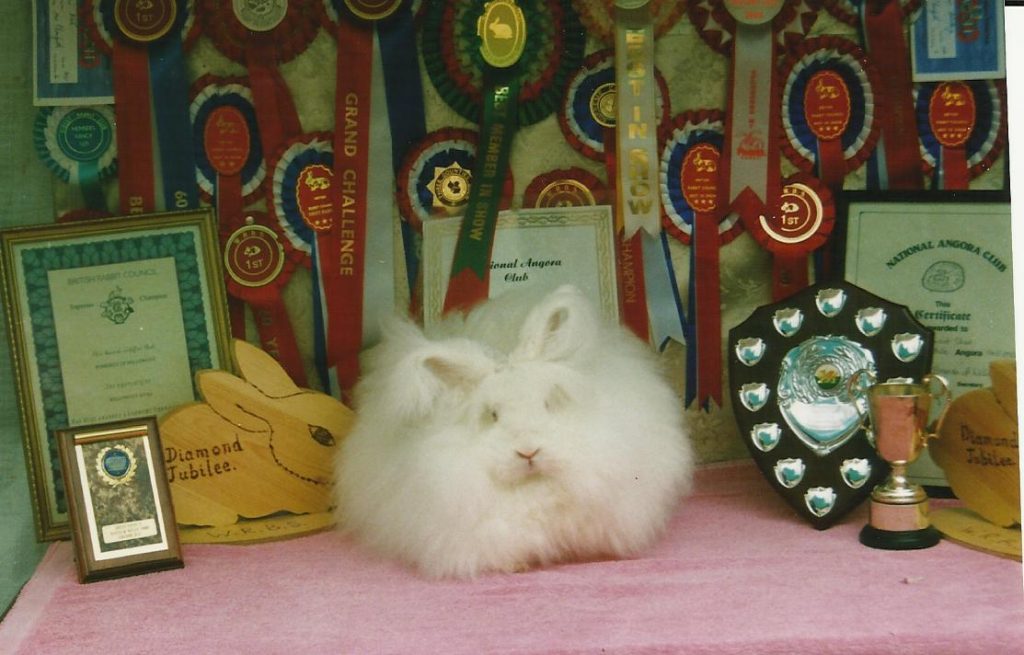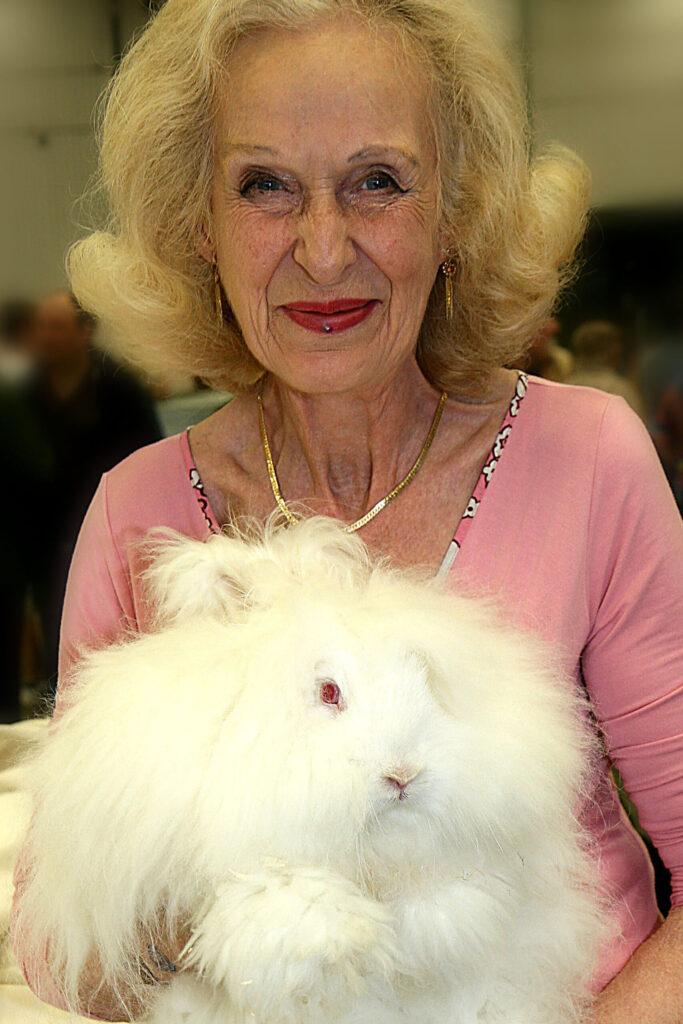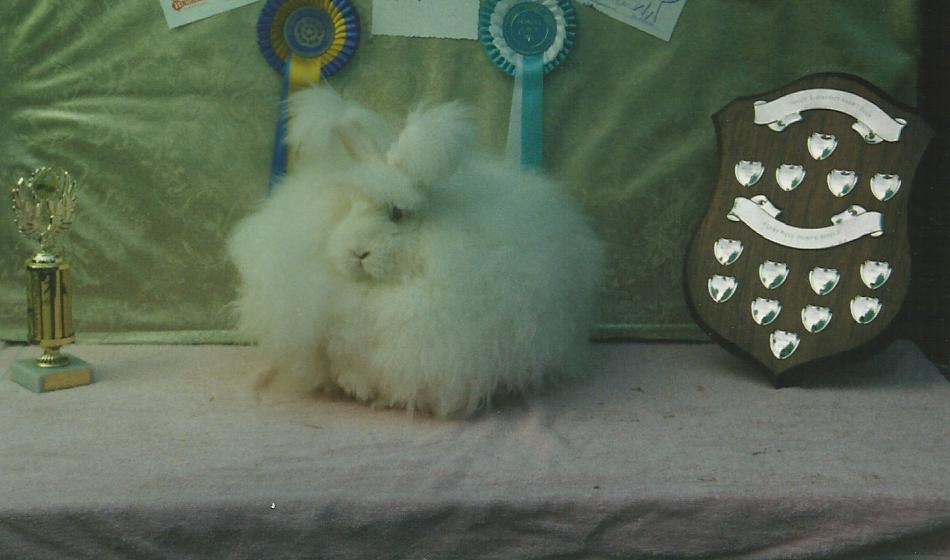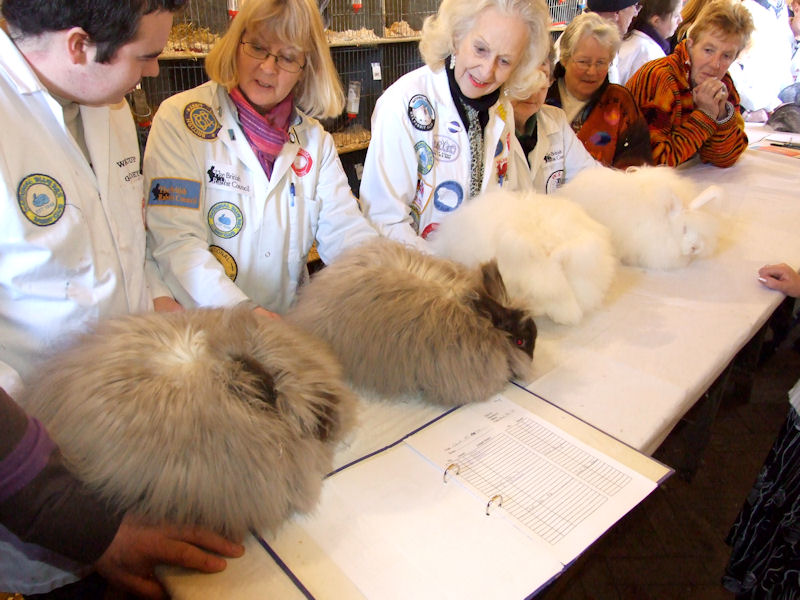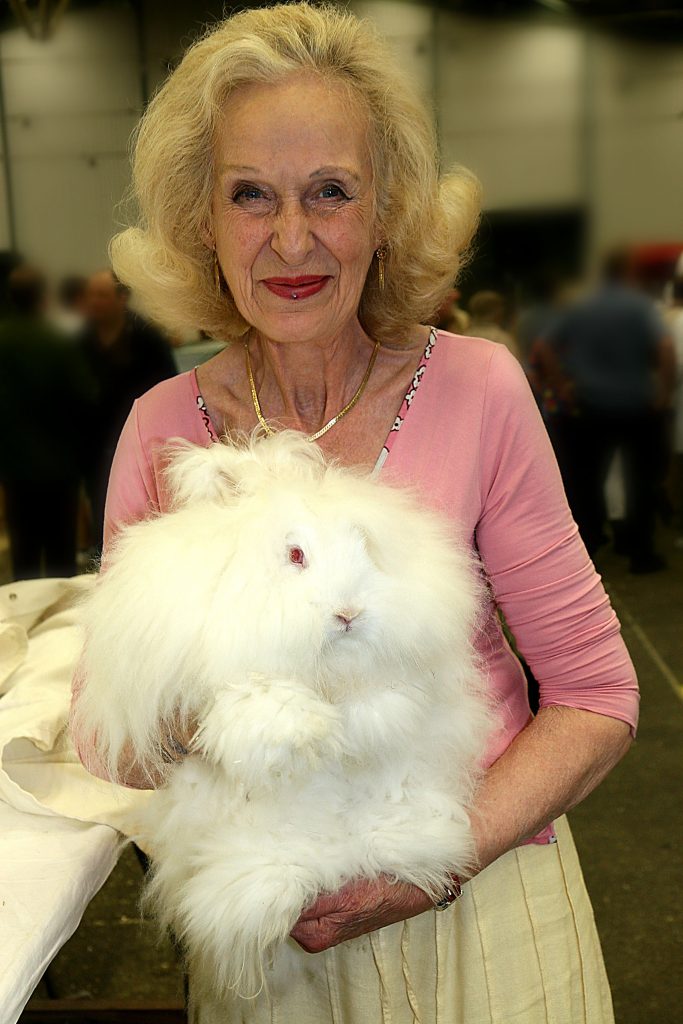
I was born in South Africa and spent the whole of my childhood in Pretoria and Cape Town. My maternal grandmother lived about a mile away in what could only be described as her own private zoo. As I was her favourite grandchild I was her very willing apprentice and shared her love of nature from a very young age. Apart from a large fish pond she designed and built almost unaided there was an enormous aviary poultry of all sorts, a few donkeys, ponies and horses and two or three small tame monkeys. But the greatest delight for me were the four angora rabbits – a pair of whites and a pair of sables. She also bred a few Sealpoint Siamese cats and Po pomeranian dogs so even with such a huge choice the angoras were both my Gran’s and my undisputed favourites.
When I was 2 years old Gran decided it was time for my first rabbit and she gave me a lttle black Dutch buck on my birthday. My father, also a keen nature lover had already arranged for a new hutch and run to be ready for lackie. He was much loved and lived to a ripe old age. I always made sure I fed him although the servants always did the cleaning out as was customary. Every birthday thereafter Gran would give me another bird or animal to add to my collection. However, as I grew older I began to feel disappointed at not ever receiving an angora. Although I loved my Gran dearly she was not the sort of person one would question and so the matter was never raised, only a deep down disappointment which wouldn’t go away.
Much later when I was older I realised the work of grooming and caring for an angora would have been too much for a young child. Instead I contented myself with helping Gran look after her angoras. I eventually married and moved to the U.K. with my English husband. Meanwhile I continued keeping a few pet rabbits. However, one day my lilac Rex does died and in my quest for a replacement (they were quite scarce) I was referred to Mr. Vic Ingram who was the Secretary of Hereford Fur Fanciers Club who knew of a breeder. When delivering the new doe he had a look round my barn where I house my rabbits and was especially impressed by the angoras and asked why I was not showing them. I said I didn’t know about shows or showing and he suggested I join the British Rabbit Council (BRC) and the Angora Club right away which I then did.

When we attended our first show I was introduced to Mrs. Barbara Pratley, the President of the National Angora Club who took me under her wing straight away. We became firm friends and we visited her many times and she gave me many lessons on grooming and many other aspects of Angora keeping. I was fortunate indeed to have such a wonderful mentor and friend and we later went on to write a book called A Beginners Guide to the English Angora.

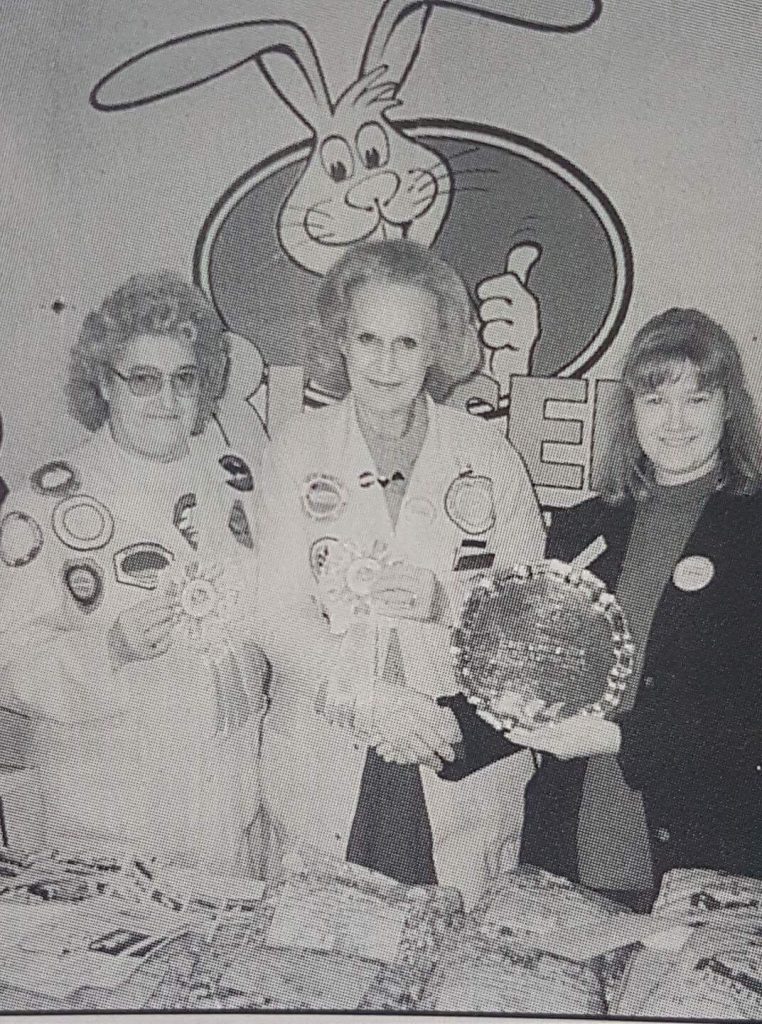
I started with Mrs. Pratleys grooming notes she had made over her show life and it was fortunate it was published before she passed away. So it was good to know all her hard work would not be lost. She gave me the best gift of all – her rabbits to continue the lines. Alas age and poor health decreed that I hand these precious rabbits over to a younger exhibitor, namely Richard Grindey, so that the lines will continue to do well.
Looking back through the show years

London Championship Show 1995 
London Championship Show 1998 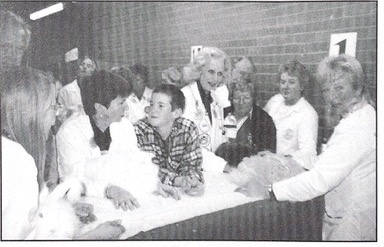
London Championship Show 1999 
1999 
Bradford Championship 2000 
Bradford Championship 2001 
Southern’s 21st Rabbit Championship Event May 2002 
Bradford Championship 2004 

2017 Bradford NAC Stand Angora Products with Yvonne
When hoping to show angora rabbits the first essential is to get one as a pet to practice on. They are the best natured of all the rabbits so usually are co-operative. A Buck aged between 8-12 weeks of age would be ideal and bucks are usually very co-operative. You know the saying “The doe has to be a bit feisty to protect the nest and the buck has to be nice to everyone to attract a mate”. This is often true.
Next find an experienced, successful exhibitor who is willing to give help and advice and you will find members of the National Angora Club score on both counts.

Items you will need to begin with for grooming are:
- Blower or hairdryer with cold air setting
- Mason Pearson handbag sized hairbrush
- Cat comb with swivelling teeth for finding knots
- A small comb for vent area
- Baby talcum powder
- Tissues
- Cotton wool
- Dry shampoo
- Witch hazel for stains
- A towel for your lap
- Soft brush for ear furnishings
- An old tooth brush for stain removal too
The main qualities you will need if you want to show angoras successfully are Patience, Stamina, Dedication, Determination and Enthusiasm. With these qualities you are bound to do well.
You will discover preparations you find helpful. A pile of talc rubbed into feet or vent will often improve stains. Webbing and knots should be teased out with your fingers and NEVER cut. Peroxide – do not use on any coloured rabbit as it could go orange colour. It can also rot the coat so is not recommended unless it is 10% or less vols on white coat. The coat should be blown through every day, even if there is not sufficient time to do a full groom. Always fluff up the coat with your hands and get as much air into it as possible. Get a friendly exhibitor to show you or watch the experts grooming at shows. For clipping get an angora club member to show you how it is done.

If you are very lucky you may win 9 Supreme Championships and 63 Championships as we did.
Go on – YOU CAN DO IT.
Article by Yvonne Fothergill-Hobbs June 2021





